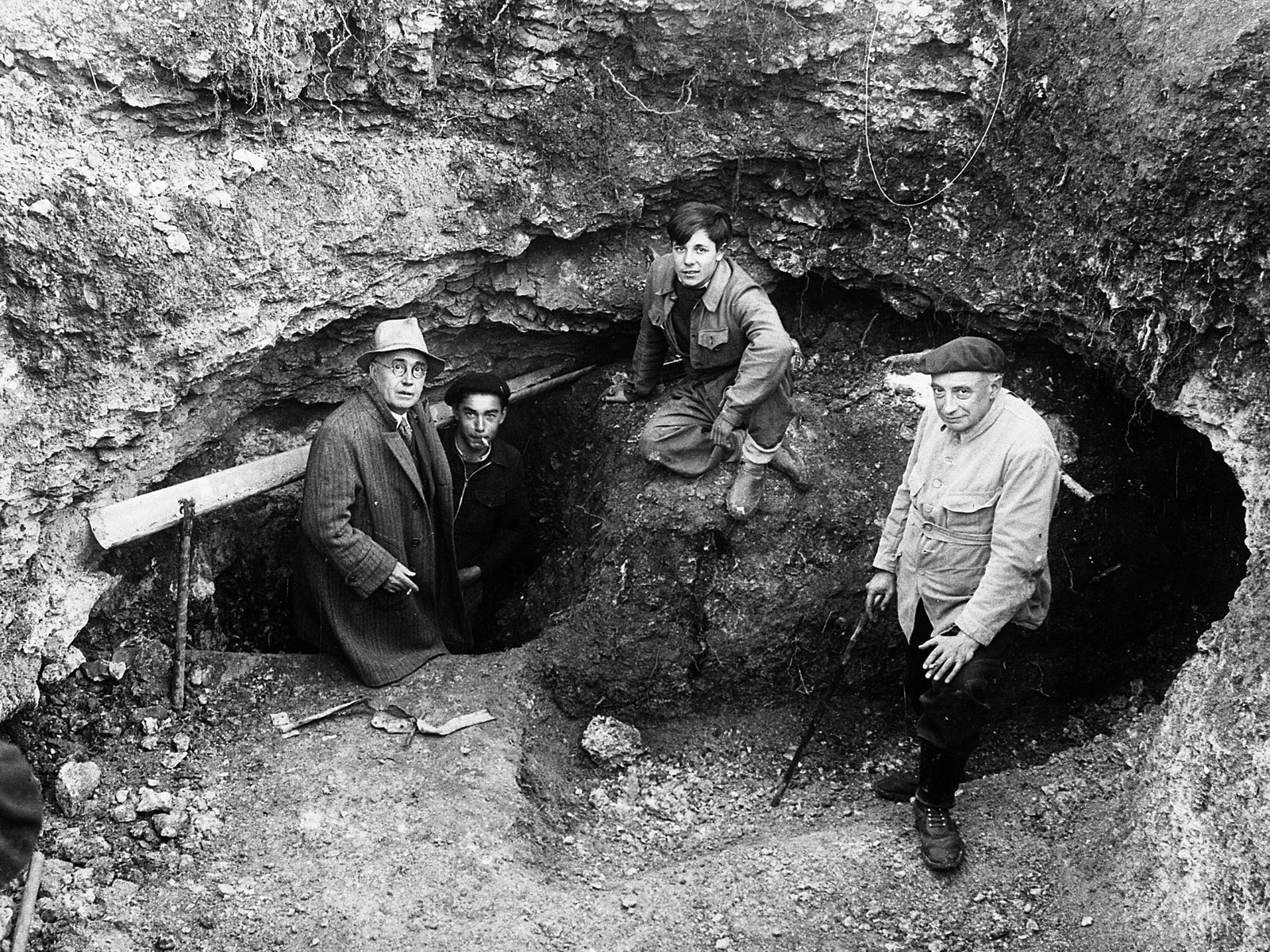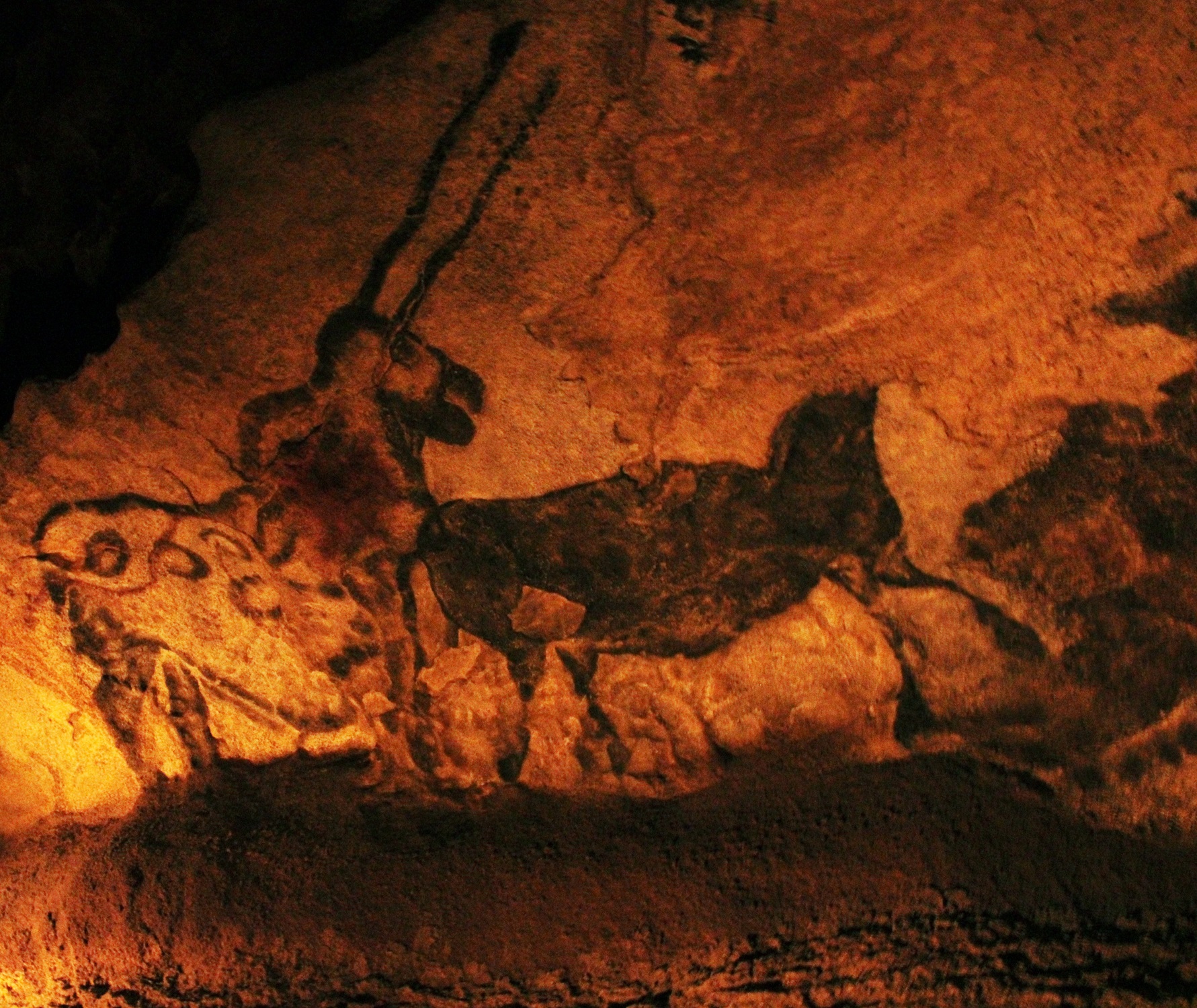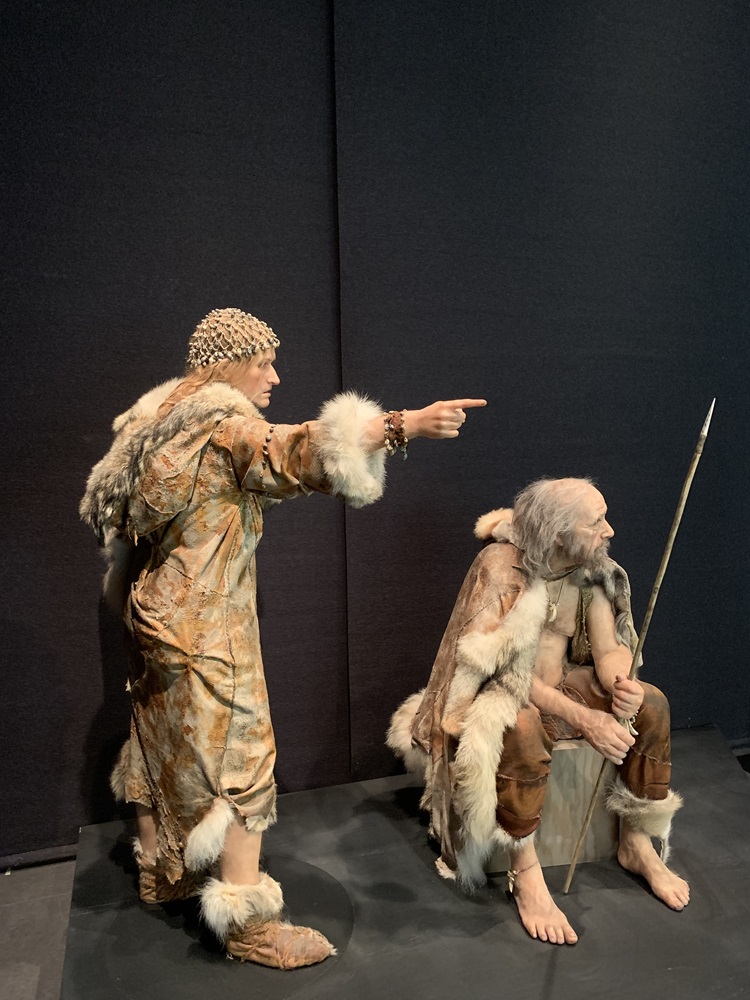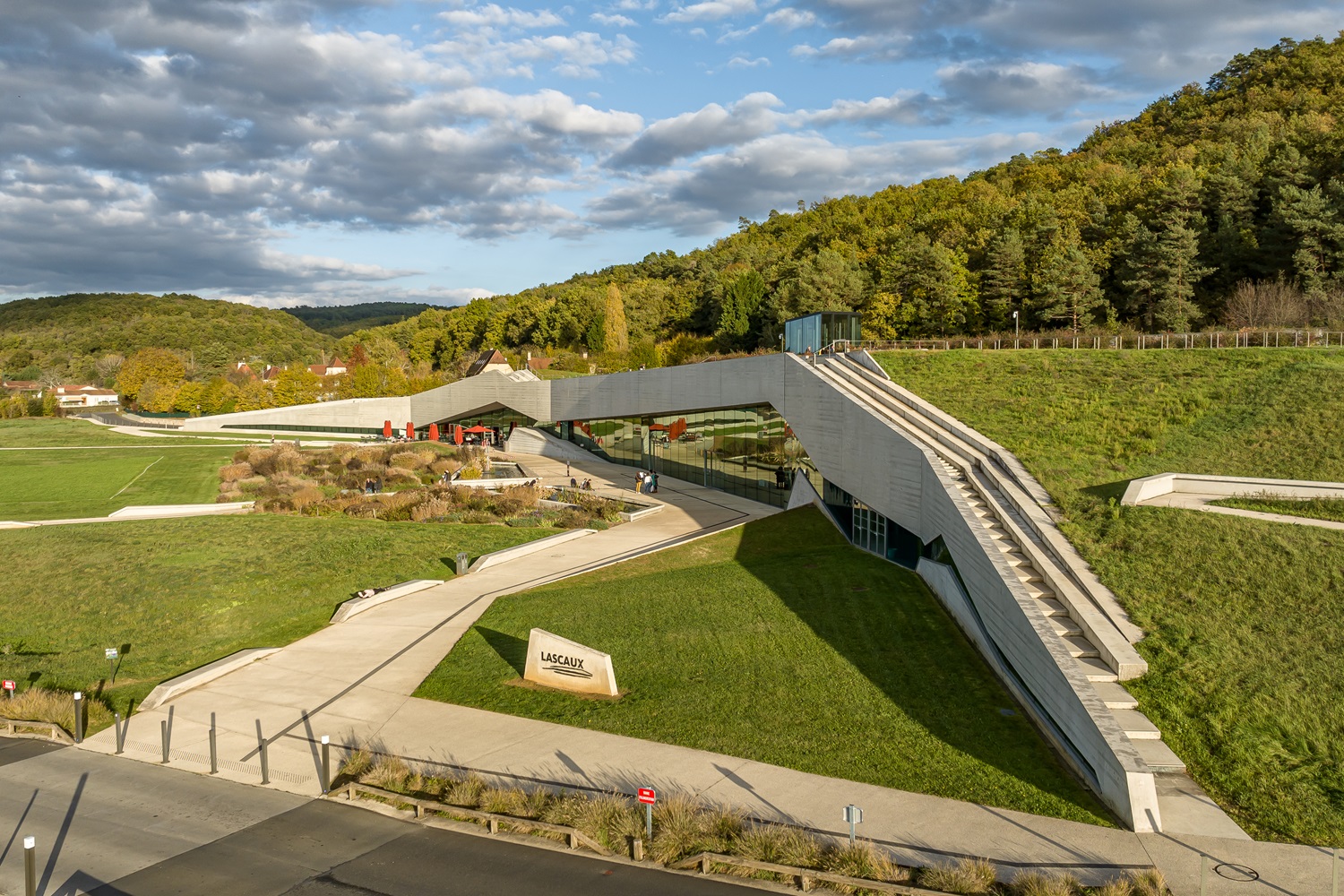History of Lascaux
-
 1940The story of discoveryLearn more
1940The story of discoveryLearn moreThe story of the discovery of the Lascaux cave dates back to 1940. Marcel Ravidat, a young man from Montignac, and his dog Robot discovered a surprising cavity in the Lascaux hill. A few days later, accompanied by his friends, he rushed inside the cave and discovered incredible prehistoric paintings.
In 1948, the cave opened its doors to the public and quickly enjoyed unprecedented success. Unfortunately, the carbon dioxide released by tourists, as well as the development work, weakened the walls, causing it to close on April 18, 1963.
-
 1983Lascaux II, the first Facsimile
1983Lascaux II, the first FacsimileIt was not until 1983, 20 years later, that Lascaux II opened its doors and became the first facsimile of a cave in the world. It reproduces identically the two most famous galleries: the Hall of the Bulls and the Axial Diverticulum with impressive precision in the restitution of the gestures of prehistoric artists.
Lascaux II now welcomes you for an unforgettable visit where you can relive the emotion of the inventors in the light of a real torch.
-
 2010Lascaux III, the Traveling International Exhibition
2010Lascaux III, the Traveling International ExhibitionConceived in 2010, Lascaux III is the first and only travelling exhibition devoted to a decorated cave. It is based on fully mobile and demountable replica of the Lascaux cave. Offering a variety of interactive experiences, it enables visitors from all over the world to discover the Lascaux cave.
-
 2016Opening of Lascaux IVLascaux II on video
2016Opening of Lascaux IVLascaux II on videoImagined by Snohetta and Casson Mann, Lascaux IV opened its doors with the intention of reproducing the entire original cave. Thanks to the expertise and techniques of the Atelier des Fac-Similés du Périgord, the entire original cave has been reproduced.
Combined with cutting-edge technology and in-depth scientific research, visitors are transported on an extraordinary journey… The experience is enhanced by scenographic spaces that provide a better understanding of cave art.




